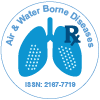Zoonosis: Understanding the Intricate Relationship between Animals and Humans
Received Date: Feb 01, 2024 / Accepted Date: Feb 29, 2024 / Published Date: Feb 29, 2024
Abstract
Zoonoses, infectious diseases transmitted between animals and humans, present significant challenges to global public health, agriculture, and wildlife conservation. The complex interplay of factors such as ecological changes, human behavior, and microbial evolution contributes to the emergence, transmission, and persistence of zoonotic pathogens. Understanding the dynamics of zoonotic diseases requires a multidisciplinary approach that integrates knowledge from epidemiology, ecology, microbiology, veterinary and human medicine, sociology, and economics. This review provides a comprehensive overview of zoonoses, including their epidemiology, transmission pathways, ecological drivers, and public health implications. We discuss key zoonotic pathogens, such as influenza viruses, coronaviruses, Ebola virus, and various bacterial, parasitic, and fungal agents, highlighting their origins, reservoir hosts, transmission dynamics, and clinical manifestations in humans. Additionally, we explore the role of environmental factors, land use changes, wildlife trade, agricultural practices, and climate change in shaping the risk of zoonotic spillover events. Strategies for zoonotic disease surveillance, prevention, and control are also examined, emphasizing the importance of One Health approaches that integrate human, animal, and environmental health perspectives. Finally, we identify knowledge gaps and research priorities to enhance our understanding of zoonoses and mitigate their impact on public health and ecosystem health.
Zoonosis, a term often heard in discussions about infectious diseases, refers to diseases that can be transmitted from animals to humans and vice versa. These diseases have been a part of human history for centuries, shaping the course of civilization and impacting public health. Understanding zoonoses is crucial for preventing outbreaks, protecting both human and animal populations, and promoting global health security.
Citation: Yaling L (2024) Zoonosis: Understanding the Intricate Relationship between Animals and Humans. Air Water Borne Dis 13: 221.
Copyright: © 2024 Yaling L. This is an open-access article distributed under the terms of the Creative Commons Attribution License, which permits unrestricted use, distribution, and reproduction in any medium, provided the original author and source are credited.
Share This Article
Open Access Journals
Article Usage
- Total views: 343
- [From(publication date): 0-2024 - Feb 22, 2025]
- Breakdown by view type
- HTML page views: 297
- PDF downloads: 46
